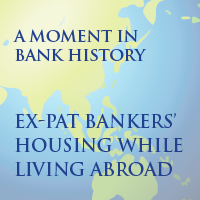 Ex-Pat Bankers' Housing (Part 1)
Ex-Pat Bankers' Housing (Part 1)
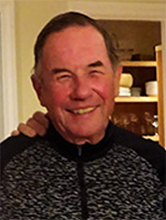 I was fortunate enough to graduate from the Chase Global Credit Training Program (GCTP) in March 1970, and was assigned to Chase, Singapore to look after the Credit and Marketing side of the business, reporting to Henk Kwant, the General Manager. Leaving New York, I didn’t have a corporate title. A few months later, I was promoted to Assistant Treasurer. My Singapore title was Deputy GM: In other words when Henk Kwant was out of town, I – in tandem with Yeap Chong Gark, who ran Operations – looked after the three offices.
I was fortunate enough to graduate from the Chase Global Credit Training Program (GCTP) in March 1970, and was assigned to Chase, Singapore to look after the Credit and Marketing side of the business, reporting to Henk Kwant, the General Manager. Leaving New York, I didn’t have a corporate title. A few months later, I was promoted to Assistant Treasurer. My Singapore title was Deputy GM: In other words when Henk Kwant was out of town, I – in tandem with Yeap Chong Gark, who ran Operations – looked after the three offices.The General Manager's home was a small estate on Ford Avenue (an upmarket location), and as it was the Country Manager's residence, it was furnished by Chase.
We were subsequently sent to the newly established Southeast Asia Regional Office and were assigned a 3,000 square foot unfurnished apartment – smaller than Singapore, bu still sparsely furnished by us.
Moving to Seoul | by Ed von Leffern (Posted January 25, 2023)
 In 1975 we were looking at buying a large home in Suffern, NY. Before bidding, I checked with John Philpot and was told to go ahead as I would not be transferred overseas for a while. Well, we purchased the home, and a month later, there was a request to transfer to Chase Seoul, Korea, as Manager of Commercial Accounts. Chase bought my home for the purchase price. We had some furniture and a lot of crystal and chinaware, but were requested to buy and bring a refrigerator and dishwasher for the Country Manager. At that time, Korea didn’t have quality kitchen appliances that could be purchased in country and it had very high tariffs, unless it was for personal use. Getting through Customs was a challenge, with that mix of household goods, that took weeks and probably a contribution.
In 1975 we were looking at buying a large home in Suffern, NY. Before bidding, I checked with John Philpot and was told to go ahead as I would not be transferred overseas for a while. Well, we purchased the home, and a month later, there was a request to transfer to Chase Seoul, Korea, as Manager of Commercial Accounts. Chase bought my home for the purchase price. We had some furniture and a lot of crystal and chinaware, but were requested to buy and bring a refrigerator and dishwasher for the Country Manager. At that time, Korea didn’t have quality kitchen appliances that could be purchased in country and it had very high tariffs, unless it was for personal use. Getting through Customs was a challenge, with that mix of household goods, that took weeks and probably a contribution.
Chase owned a three-bedroom, two-bath condo on top of Namsan Mountain, in downtown Seoul. I occupied it after Jim Spackman moved out. That took six to eight weeks, so a Customs delay was not a problem. We lived in the Chosun Hotel, so I managed to retrieve two boxes of what I thought were clothes. Unfortunately, it was stereo equipment, so we had to buy clothes.
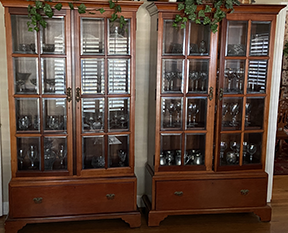 The condo had limited furnishings, so we bought 17 pieces of Chippendale-style furniture (at my expense) that were manufactured by a British-Korean company for export only. My wife had a furniture catalog, and all we needed was a picture. The carving was magnificent and was a great memory of our Korean assignment. For example, my desk is a copy of the President's desk, and our dining room table and chairs look like they came from Buckingham Palace.
The condo had limited furnishings, so we bought 17 pieces of Chippendale-style furniture (at my expense) that were manufactured by a British-Korean company for export only. My wife had a furniture catalog, and all we needed was a picture. The carving was magnificent and was a great memory of our Korean assignment. For example, my desk is a copy of the President's desk, and our dining room table and chairs look like they came from Buckingham Palace.
Korea was a hardship post, but it had many benefits that offset the challenges. When we left after four years, the wife of a Korean customer asked me if she could buy our household goods. Koreans had the same issue with Customs. I looked at the US$ prices of chinaware, U.S.-made furniture and a large Chinese rug. I figured I could repurchase them in Los Angeles and save shipping costs.
If I Were a Rothschild | by Paul Hemminger (Posted January 25, 2023)
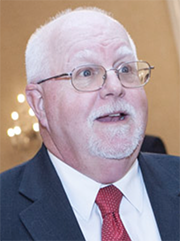 When we moved from Australia to London, we looked for rentals for the six of us: my wife and I, plus three kids and an au pair. The guide was near an American School (ACS). We found Courtland House near ACS Cobham in Surrey. The house was originally (in the 1880s) called Seven Arrows and was built by the Rothchilds as a rest stop on the way from London to Portsmouth. It has 2-1/2 acres and backed on the Oxshott Heath. The Bank paid for a premium three-year lease while i was VP/Deputy Financial Controller for Europe, Africa, Middle East
When we moved from Australia to London, we looked for rentals for the six of us: my wife and I, plus three kids and an au pair. The guide was near an American School (ACS). We found Courtland House near ACS Cobham in Surrey. The house was originally (in the 1880s) called Seven Arrows and was built by the Rothchilds as a rest stop on the way from London to Portsmouth. It has 2-1/2 acres and backed on the Oxshott Heath. The Bank paid for a premium three-year lease while i was VP/Deputy Financial Controller for Europe, Africa, Middle East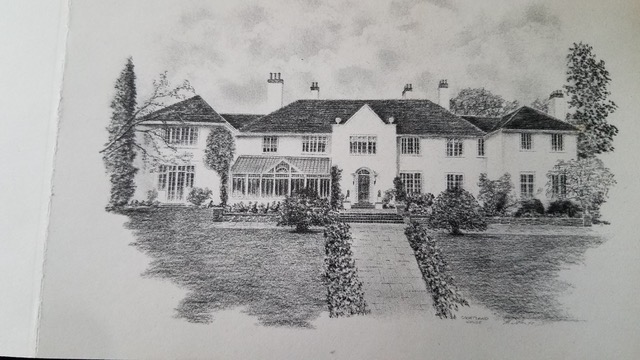
Famous Neighbor in Milan (with Security) | by Neil Wright (Posted February 5, 2023)
 In 1985 I accepted an offer to move to Milan as the country M.I.C. Officer, which meant moving from London to Milan. I was very excited about the opportunity as I had previously lived in Italy during high school and had learned Italian. I was not married yet, so my housing requirements were pretty simple: A local realtor was assigned to work with me and I told her that the number one (and only) requirement was that I would like to be walking distance from the office in Piazza Meda. She found a beautiful two- bedroom apartment that was about 20 minutes walk to the bank and was within the allocated budget, and I quickly agreed to move in. On my first morning I road the elevator down, and as the doors opened, I was confronted by three men with guns drawn. As you can imagine, this was quite a shock. Thankfully, as I spoke Italian, I was able to explain that I had just moved into the building! No one had told me that I had a very famous neighbor, Sig Pirelli of the tire company, who owned the penthouse of the building, and these were his personal bodyguards, very much on alert to someone unfamiliar in the building. They would be waiting for him each morning, and there would be three cars waiting. He would choose one at random to take him to his offices; my presumption was that this was due the spate of attacks on senior industrialists by various terror groups. All quite terrifying in the beginning, but I quickly got to know the guards, and I have to say that despite their getting used to my leaving for the office at approximately the same time as their boss, they were always on the alert when the elevator door opened.
In 1985 I accepted an offer to move to Milan as the country M.I.C. Officer, which meant moving from London to Milan. I was very excited about the opportunity as I had previously lived in Italy during high school and had learned Italian. I was not married yet, so my housing requirements were pretty simple: A local realtor was assigned to work with me and I told her that the number one (and only) requirement was that I would like to be walking distance from the office in Piazza Meda. She found a beautiful two- bedroom apartment that was about 20 minutes walk to the bank and was within the allocated budget, and I quickly agreed to move in. On my first morning I road the elevator down, and as the doors opened, I was confronted by three men with guns drawn. As you can imagine, this was quite a shock. Thankfully, as I spoke Italian, I was able to explain that I had just moved into the building! No one had told me that I had a very famous neighbor, Sig Pirelli of the tire company, who owned the penthouse of the building, and these were his personal bodyguards, very much on alert to someone unfamiliar in the building. They would be waiting for him each morning, and there would be three cars waiting. He would choose one at random to take him to his offices; my presumption was that this was due the spate of attacks on senior industrialists by various terror groups. All quite terrifying in the beginning, but I quickly got to know the guards, and I have to say that despite their getting used to my leaving for the office at approximately the same time as their boss, they were always on the alert when the elevator door opened.PAIC continued to flourish, and seems to have been a highly regarded participant in the Philippine financial community. Invitations from the Marcoses followed for dinners at Malacanan, the Presidential palace, a cruise on the Presidential yacht, etc.
On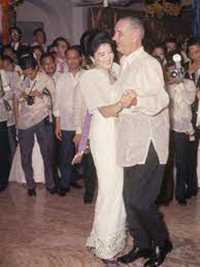 ce, on a 36-hour cruise to honor a visit by several high-end British business leaders, there were a total of 20 passengers on the trip, including the seven British businessmen. There were two bands on board, and it seems I ran afoul of First Lady Imelda Marcos. I was told long after I left Chase that my “sin” was that I didn’t ask the First Lady to dance. Following our return to Manila, I’m told that a message was relayed to Chase that the bank had 24 hours to arrange my departure from the Philippines. At that point, I understand that nobody would “come clean” as to why I was being thrown out of the country.
ce, on a 36-hour cruise to honor a visit by several high-end British business leaders, there were a total of 20 passengers on the trip, including the seven British businessmen. There were two bands on board, and it seems I ran afoul of First Lady Imelda Marcos. I was told long after I left Chase that my “sin” was that I didn’t ask the First Lady to dance. Following our return to Manila, I’m told that a message was relayed to Chase that the bank had 24 hours to arrange my departure from the Philippines. At that point, I understand that nobody would “come clean” as to why I was being thrown out of the country.
(Photo: Imelda Marcos, dancing with LBJ, not Tony Lord)
Eventually this matter reached the desk of Mr. Rockefeller, and he then contacted President Marcos, who apparently wouldn’t disclose what I had done. Eventually DR advised President Marcos that he would arrange for me to leave the Philippines, but that the annual meetings of the Chase International Advisory Committee, which were scheduled to be held in Manila, would be moved to another country. The end result was that I was permitted to stay!
I was totally unaware of this crisis, and only found out about after I had resigned from Chase to join Baring Sanwa Multinational, a newly established Asia-wide merchant bank being established in Hong Kong.
Note: Leaving Chase was the biggest mistake I made during my time in the international banking community.
